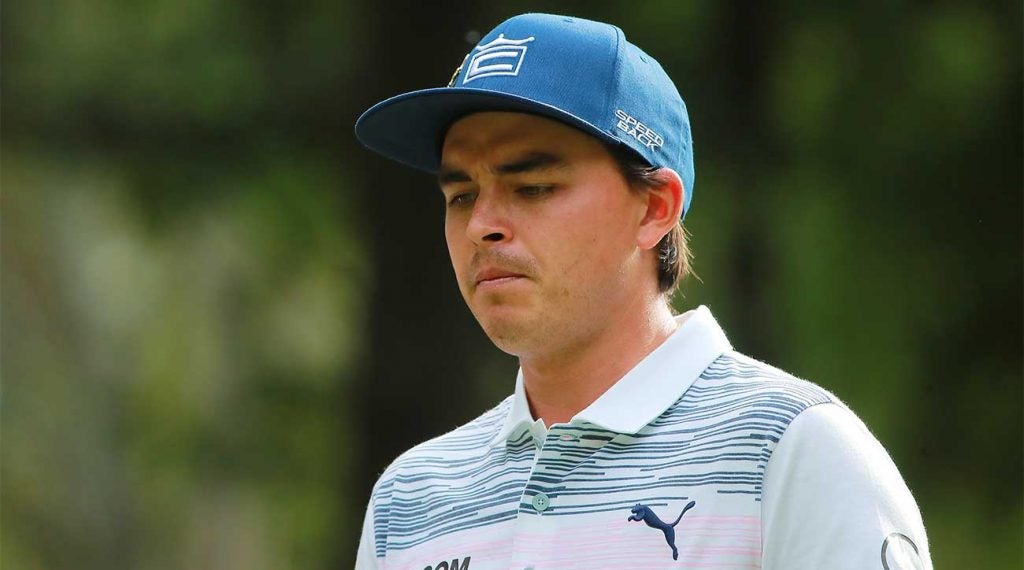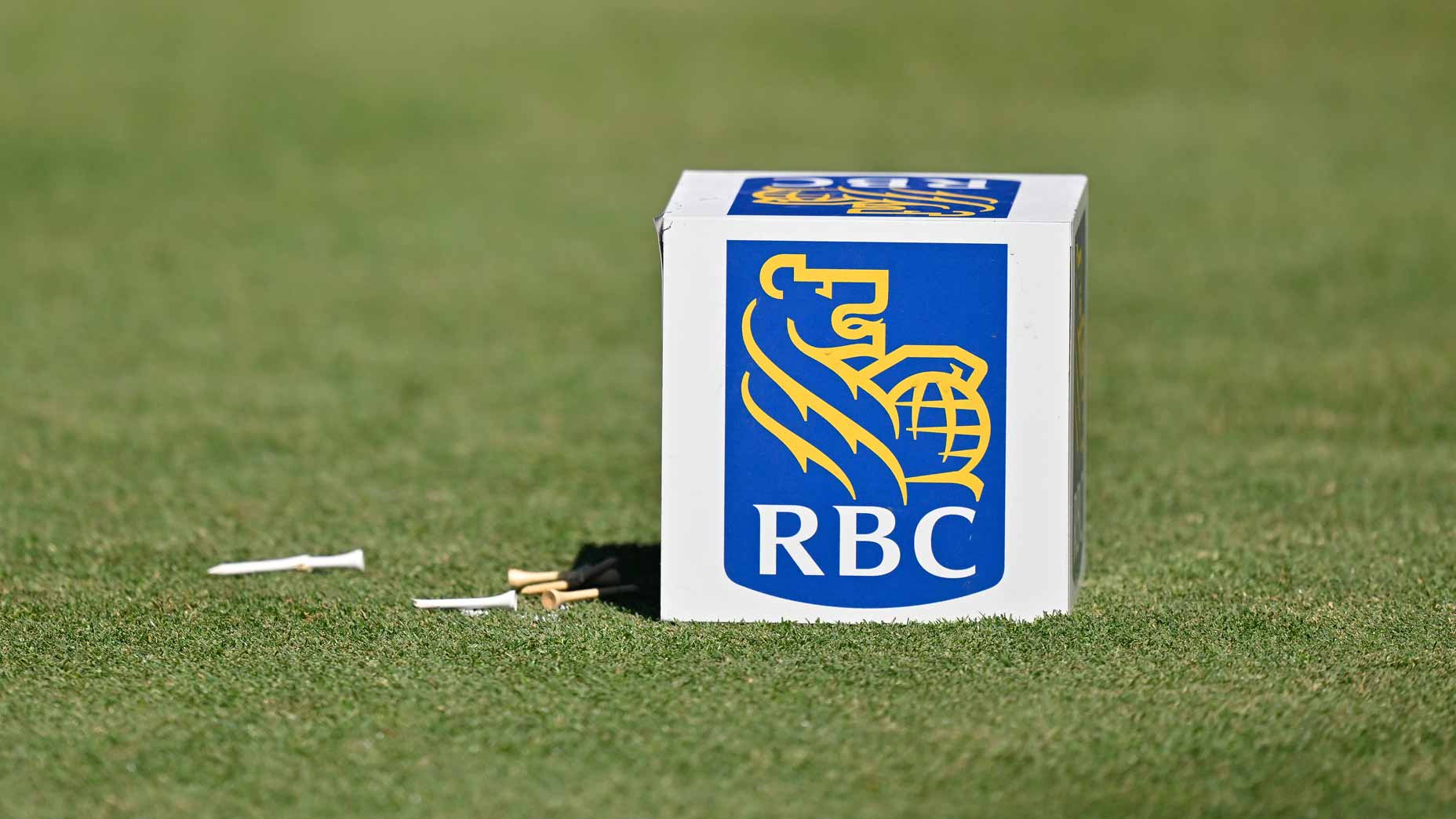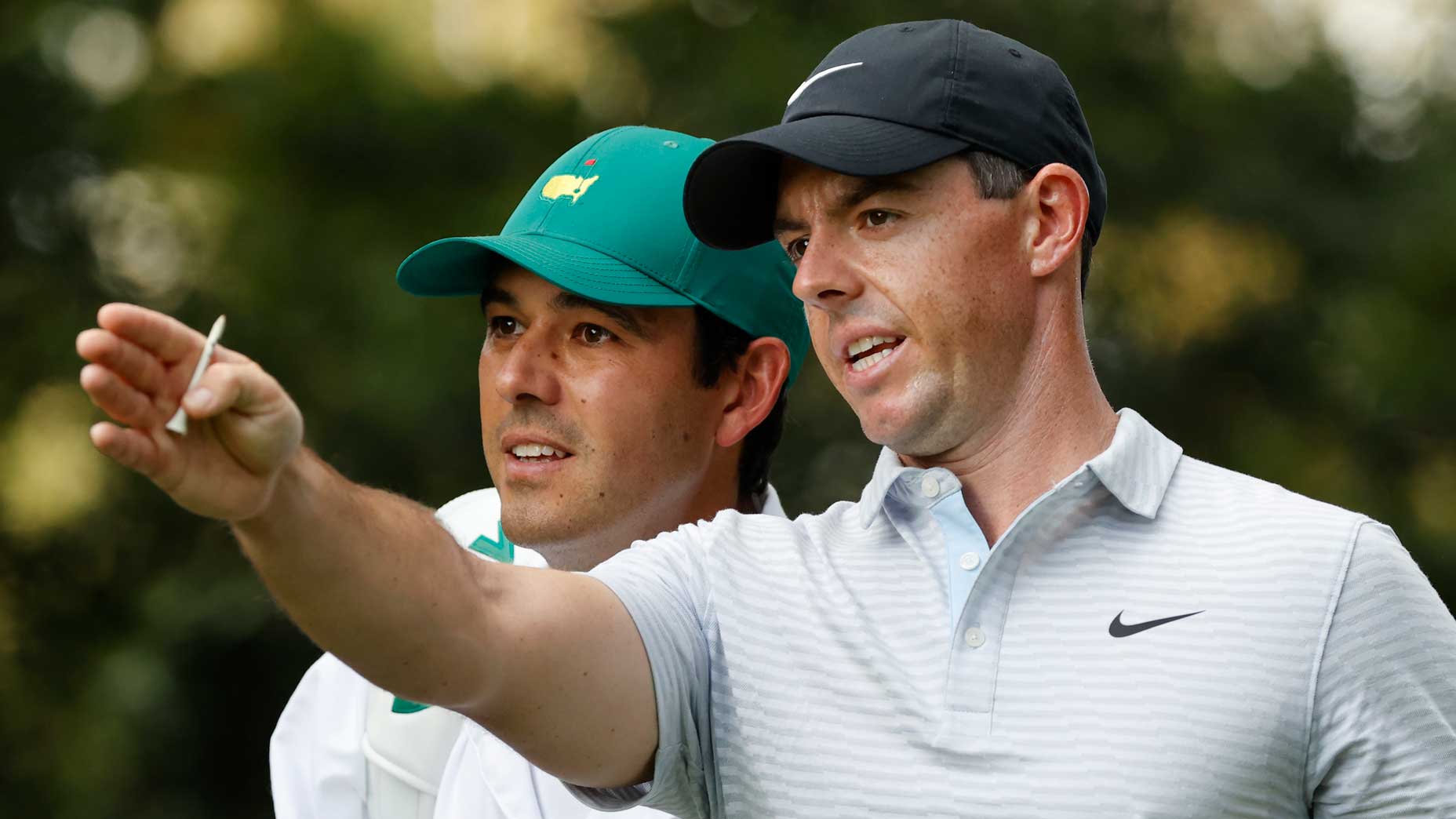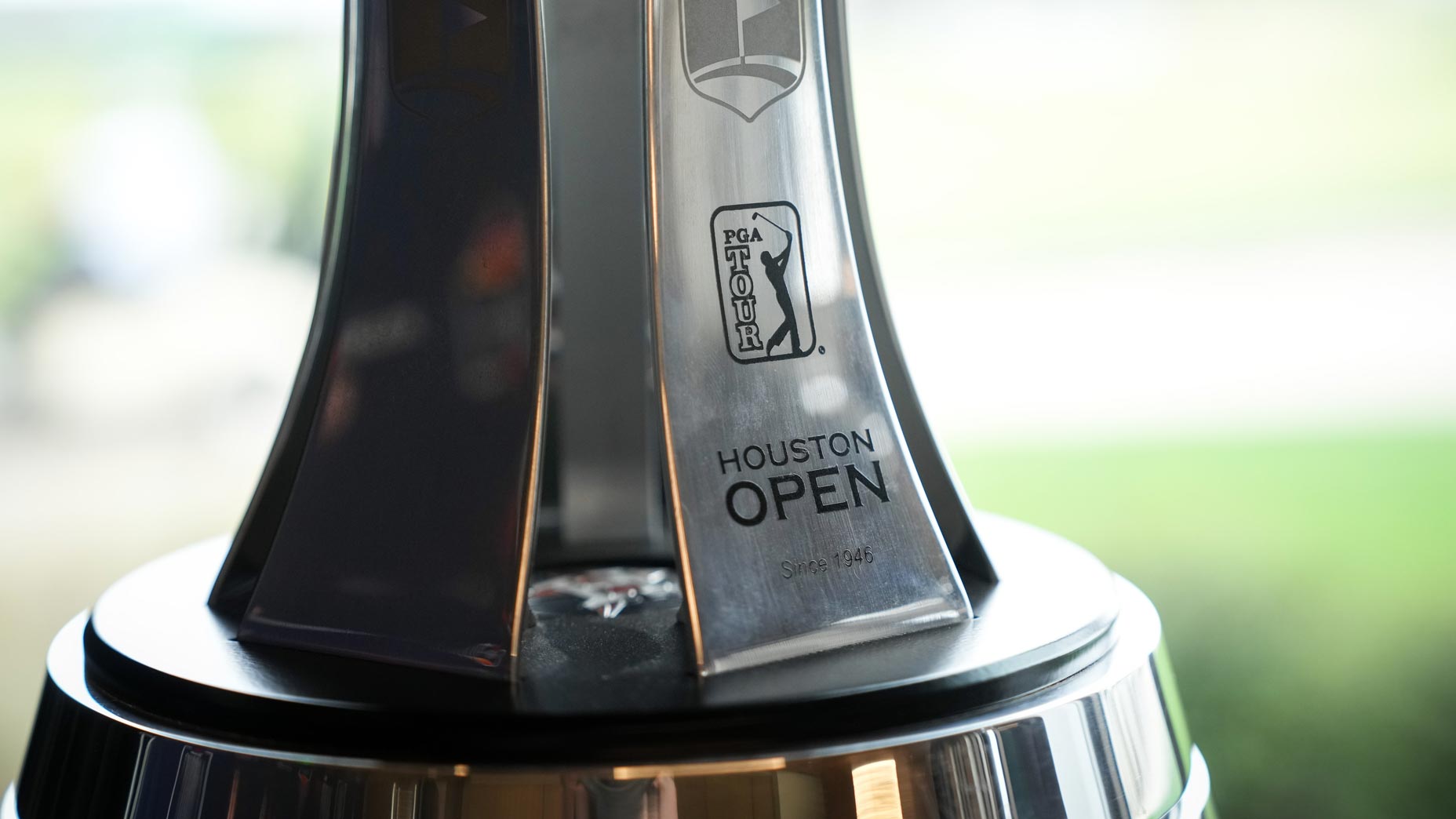Check in every Sunday night for the unfiltered opinions of our writers and editors as they discuss the hottest topics in the sport, and join the conversation by tweeting us @golf_com. This week we discuss yet another backstopping controversy in pro golf, the new knee-high drop rule, Steve Stricker as the U.S. Ryder Cup captain, Bryson DeChambeau’s putting green blowup and early Masters favorites.
1. Pro golf’s latest backstopping controversy took place at the Honda LPGA Thailand on Friday, when top-ranked Ariya Jutanugarn didn’t mark her ball before American Amy Olson chipped on. (As Jutanugarn was preparing to mark, it appeared that Olson waved her off.) Olson’s chip proceeded to hit Jutanugarn’s ball and nestled close to the hole. The women fist-bumped before knocking in their birdie putts. In a statement, the LPGA said no breach had occurred. “Rule 15.3a clearly states that for a breach to occur, that two or more players must agree to leave a ball in place to help any player on her next stroke. This was not the case between Olson and Jutanugarn.” Olson later said they were just trying to speed up play and wasn’t even aware of “backstopping.” Did LPGA officials get this one right?
Dylan Dethier, associate editor (@Dylan_Dethier): At this point, the tours need to make a collective announcement that they’re going to start enforcing this rule, because calling a penalty here would have broken with precedent, if not the letter of the law. Players simply do this all the time. I’m fine with a stricter enforcement — it’s probably the right move at this point — but I think the pitchforks came out a bit too fast on this one.
Josh Sens, contributor (@JoshSens): I buy Olson’s claim that she was unaware of the rule and that there was no conspiracy at work. But as Michael notes below, not knowing the rule is not an excuse. I thought it was a violation and should have been treated as one. No precedent? True. But you’ve got to start somewhere. Establish a precedent, and incidents of that kind will become a lot more scarce. Agreed on the overheated online pitchfork wielding, though. Those social media mobs sure do form fast.
Michael Bamberger, senior writer: Ignorance of the rule does not excuse you from complying with it. The fist-bump was the most telling part of it. When in doubt, and if it’s at all close, just mark. I think the LPGA did get it right because there is no precedent for calling it. But that should change.
Jeff Ritter, digital development editor (@Jeff_Ritter): Right now backstopping is more of an Internet Thing than a Pro Tour Thing. Twitter was all over it, but I still buy Olson saying she was unaware of the rule. Let’s face it: it’s time for Tour pros to get up to speed, because backstopping is not a great look. A penalty was warranted, and it would’ve sent a message, even though Olson wasn’t trying to do anything malicious.
Sens: Exactly. A message is needed. The argument that no precedent exists but that one should be set sort of contradicts itself. What’s to keep you from making that same argument the next time? The LPGA missed an opportunity to set that example now.
2. Are we likely to ever see a backstopping penalty called on the pro tours?
Dethier: The social media backlash has certainly been stronger than any reaction from golf’s governing bodies. The internet callouts have already had a slight effect, I think. But no, I don’t see it happening anytime soon.
Ritter: I think 10 years from now there will be the same number of backstopping penalties as slow play penalties. Which is to say, less than five.
Sens: I think we’ll see it, but not without some debate over what qualifies as a reasonable distance from the hole to require a mark. At the ‘99 Ryder Cup at Brookline, I remember following Jose Maria Olazabal and Sergio Garcia in a fourball match. Garcia’s ball was on the green, a few feet from the pin, and Olazabal had a little over 100 yards left on his approach. Rather than hit, he asked Garcia to walk up and mark his ball, delaying play. The local crowd gave Olazabal all sorts of grief, partly because they were Bostonians, and that’s what we Bostonians do for an unpaid living, but also for what they perceived as Olazabal’s arrogance. When things finally settled down, Olazabal rattled the pin with his 100-plus-yard approach. His ball likely would have hit Garcia’s on the way in. The point being — as good as the best players are today, it will be interesting to see where we wind up drawing the distance line.
Bamberger: No, I don’t think you’ll ever see it called on a major tour. It’s a cousin to the slow-play rule that way. The three-minute ball search, the same.

3. Rickie Fowler was the first high-profile player to be dinged for the new drop rule when he hit a shot OB in Mexico and then dropped from shoulder height — only to be penalized an additional stroke because he didn’t drop from the new knee-height level. Fowler described the new rule as a “terrible change,” echoing the sentiments of several others pros who have spoken about the new dropping procedure. Should pros just quit their moaning and adapt, or do they have a point here?
Dethier: Yeah, this one’s dumb. There was no real need for the knee-height thing in the first place, but if the goal is for more lenient rules, let’s make it a strike zone, knee-high and up. Then we’d be able to stop talking about it.
Sens: I don’t mind knee-height as the low bar, and none of this stuff is all that tough to understand. But Dylan’s right. Penalizing for a higher drop is beyond ridiculous.
Ritter: Oh, pros are free to moan away. Their livelihoods depend on these rules. Many of the new rules are simpler and a clear improvement. The knee-high drop is a miss, though.
Bamberger: It looks ridiculous, just as dropping blind and over the shoulder looked ridiculous. The rule should be amended, knee-height to shoulder height.
4. The game’s worst-kept secret was revealed last week when Steve Stricker was named the U.S. team’s 2020 Ryder Cup captain for Whistling Straits. Like the pick? And what is job No. 1 for Stricker as he prepares his team for the matches?
Dethier: Yeah, it’s solid. Stricker’s a no-nonsense Wisconsin Man who certainly seems to have the respect of the team and managed quite capably at the last Presidents Cup, where you’ll recall the U.S. team nearly won on Saturday. Job No. 1 is to keep the focus-grouping out of it and keep this thing simple!
Sens: Simple is right. Overthinking rarely helps in golf, and has any position in the sport been more over-scrutinized and over-complicated than that of American Ryder Cup captain? This isn’t nuclear physics. Try to minimize distractions and keep your team relaxed. Sit down with your assistants over a beer and draw up pairings on a napkin. If your beer is gone and you still don’t have your pairings, you’ve spent too long on them. Twenty minutes should do it. Then send your players out and hope they make some putts. Stricker seems smart enough to know that that’s the way to go.
Ritter: Why do the Europeans tend to play more loose, relaxed and just plain better than the U.S.? That’s the riddle Stricker will need to crack. I can buy overthinking, but I also think the U.S. got out-strategized in France. Europe expertly set up a golf course that played to its strengths. Stricker should do the same with Whistling Straits — stretch it out, cut down the rough, ignite the greens — and then cut his guys loose.
Sens: Fair points, Jeff. But how long did that take? Thirty seconds? Strategizing done.
Dethier: Right. It’s not that the captaincy doesn’t matter — it’s just that it seems like a job best done by one person, not an entire committee.
Bamberger: I guess Stricker is a good pick because the players seem to like him and likability is likely an underrated factor in what makes a good captain (or any sort of manager). The players have the skill-set; the captain has to manage the existing skills, not redefine them. I think that is the first task — let the players be themselves.
5. Bryson DeChambeau didn’t have his best stuff in Mexico, but he still made headlines when a camera caught him tomahawking his putter into the practice green. He later apologized. This isn’t the first time DeChambeau has exhibited a serious lack of golf etiquette: just last week he took a chunk out of a bunker at Riviera, and last year at the European Open he was criticized for a brief handshake with the winner on the final green (which he also apologized for). No one’s doubting DeChambeau’s burning desire to win, but is his short fuse more of a positive or a negative for the 25-year-old pro?
Dethier: For all the talk of his careful calculations, Bryson has always run super hot, especially once things start moving in the wrong direction. It’s one of the things that makes him so fascinating! Bryson and Sergio would do well to heed pro golf’s unofficial Rage Rules: break as much of your own stuff as you want, but don’t mess with the greens.
Sens: Don’t make him angry. You wouldn’t like him when he’s angry. The dude is as tightly wound as the core of an old golf ball, and he’s free to be that way. But when he starts going Hulk on greens and bunkers, it’s not good for anyone. That said, plenty of players throughout history have had to learn to manage their temper. DeChambeau has already won multiple times on Tour. No reason to think he won’t continue to get better at putting that intensity to productive use.
Ritter: Well said, guys. No matter how ticked you get, you can’t rake a putting green. If he can’t keep his rage in check, I want to suggest that Bryson just go old school and snap a club over his knee — but I imagine each of those single-length sticks is so specifically calibrated they’d be impossible to replace.
Bamberger: I’d suggest he take a page from Tiger and a thousand others. Mutter the most vile thing you like, but don’t take it out on the course. That’s dissing your competition, to say nothing of all the men and women who do the work to turn the field into a green dream in the first place. Time to grow up.
6. Dustin Johnson cruised in Mexico City, Rory McIlroy logged his fourth straight top five and big-time players like Phil Mickelson, Justin Rose and Rickie Fowler have all won in the past month. And, oh yeah, Tiger Woods is playing well, too. Whose early season form has you believing that he’s most primed to make a run at Augusta?
Dethier: Dustin Johnson didn’t just cruise — he absolutely dropped the hammer. His Sunday back nine (five birdies in seven holes) was outrageous. When he’s winning tournaments, it just has this feeling of inevitability, like nobody else should ever win. Still, that doesn’t mean he’ll win at Augusta. At last check, GolfOdds.com had nine players (9!) listed between 12-1 (Tiger Woods, the favorite) and 16-1. Has there ever been such a crowded field? Still off the board but playing about as well as anyone (besides a Saturday 79) is Matt Kuchar, who has played the past few months like a man possessed.
Sens: Woods and Rose will be in the final pairing on Sunday at Augusta. Rose will win by a shot.
Ritter: Sens calling it early! Josh, don’t you pick Rose every year? (To be fair, I think I picked him last year, too.) I think DJ is incredible when he’s on, but there’s still a lot of Florida golf to play before Augusta. If I had to pick a favorite now, I’d lean Justin Thomas, but like Dylan mentioned, it’s a crowded field of contenders.
Sens: Well, last year I picked… Patrick Reed. But you’re right. I’m pretty much always long on Rose. It is one of life’s greatest mysteries why he hasn’t won at Augusta yet. Or, at the very least, a bit surprising.
Bamberger: The Masters winner: Justin.








